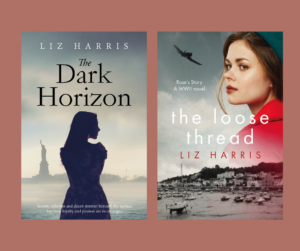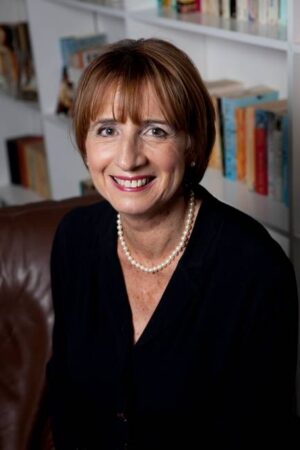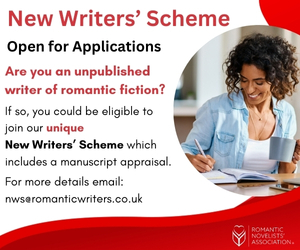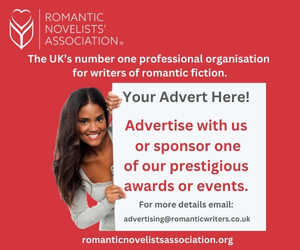#IndieApril Author Spotlight: Liz Harris
8 April 2024

We are delighted that you could join us to talk about your indie author journey. Could you tell us a little more about it? Why did you decide to go the self-published route? For money! That does sound awful, doesn’t it, and it was actually a bit more than that, but I was aware of what a couple of indie friends were earning, and I knew that I hadn’t made that sort of money with my traditionally published books.
It was also about seeing my books, when published, looking as I wanted them to look. I had disagreed with my publisher about the cover of my last novel with them as they’d chosen a girl of the wrong race, with the wrong hairstyle, wearing lip gloss for a novel set in the 1870s! Their response to my concern about the cover had been to change the title I’d given the book. I never wanted to be in such a position again – I wanted to be the one in control.
A little nervous about taking the leap and going it alone, though, I submitted a novel to a different publisher, whom I’d heard was excellent, and I was given an editor and looked set to sign with them. Then Covid and lockdown struck in the March, and everything was put on hold. I was told that all discussions with unsigned authors were being suspended until Christmas. But I didn’t want to wait that long to have another book published, so I started to explore the world of indie publishing and published my first novel, The Dark Horizon, in June 2020.
By the time that Christmas arrived, I knew that I’d made the right decision. I loved the way in which my career was progressing, and I didn’t want to change a thing.
What is the best part of being an indie author? I shall say three things, if I may. The first two are contained in my answer to your first question – the money and being my own boss. I have a brilliant cover designer and each on my eighteen novels reflects the look I want it to have. I also have an excellent professional editor.
The third thing is that the novels I wrote a few years ago still see the light of day. When a book is about to be traditionally published, the publisher focuses on the author and book during the immediate period pf publication, and then they go on to the next author and book they’re about to publish. Your published novel languishes after the publisher has moved on. Occasionally it pops up in a few promotions, but that’s all. If you’re indie, you can keep on reminding readers of all of your books, and that’s the way to build up a readership.
What is the hardest part of being an indie author? When you start out, it’s difficult to know where to put your money in order to advertise your novel. There are so many options. I certainly wasted money when I published my first couple of novels, and although the expenses were tax deductible, I still lost money in my first year of being an indie. But never since then. You soon learn what works and what doesn’t, because, if you’re an indie who puts their own book on Amazon, and doesn’t pay a company to do that for you, you can see your stats.
The other hardest part is if like me, you’ve been traditionally published, you miss the fact that on publication, the publisher sends out details of your book to the many readers on their list. This can be thousands of readers, and if a large percentage buy the book, it gives it a great send-off. As an indie, you have to build up a readership for yourself.
What does a typical day look like for you? I switch the computer on at about 6am, and I switch it off at 11pm. I spend the evening with my husband so I’m not on the laptop from 6pm to 11pm, but it’s switched on in case I need to check something.
I spend a lot of time on research, and I store this information in online files that are clearly headed. When I’m finally ready to start writing, I aim for 2000 words in a day. While I don’t always achieve that, I frequently do.
I start each day’s writing by reading through what I wrote the day before. As I do so, I tighten the writing and ensure that I’ve not missed a point that needs developing. By the time I get to the last word written the previous day, I’m back into the setting, the story and into my characters’ heads, so as I start to break fresh writing ground, words flow.

Please tell us about your books. While I’ve written several contemporary novels, a couple of which are set in Italy, most of my books are historical fiction.
I prefer recent history. The three books in the Linford Collection, which began with The Dark Horizon, are set between 1920 and 1935, and the four books in The Colonials Collection, which began with Darjeeling Inheritance, are set in the 1930s. My latest trilogy, Three Sisters, which begins with The Loose Thread, is set between 1938 and 1948.
How has being in the RNA helped you with your indie journey? I don’t think I’d ever have been published without the RNA. I went to an RNA Conference in the Royal Holloway just after I’d joined, which was eye-opening. I then joined the Oxford Chapter, which I ended up running for 17 years, and over the years I went to a number of talks organised by the RNA in the much-missed New Cavendish Club, and learnt so much. Without the knowledge I gained about the craft of writing for publication, and about the world of publishing, I wouldn’t have known where to begin, nor what was expected in a submission.
I also made some fabulous friends through the RNA. Writers are a tremendously supportive community, and the last twenty odd years since I joined the RNA have been enriched by the friends I’ve made over the years through my membership of the RNA.
What advice would you give to somebody who wanted to go the indie route? Firstly, a number of excellent publishers who’ve sprung up in recent years require the author to have at least two books ready to go, the rationale being that once a book has been published and is being read, those readers, if they enjoyed the book, will look for another by that author. They often publish their authors’ books at eight month intervals, for example. Indies should follow the same path.
Before publishing your first novel yourself, make sure that you’ve another ready for publication, and perhaps even a third close to completion. As an indie author, you’ll be doing all of the marketing for your novel, and learning a lot as you go. It’s much easier if you’re not trying to write your next novel at the same time, but have another novel written, edited and ready to be published perhaps six to eight months after the first.
My second piece of advice is that it helps to have a small sum of money to dip into before you embark upon publishing your first novel. Publishing your novel is your business. As with any other business, it needs investment. You need a striking cover that looks professional and you need excellent editing. These cost money. You must also pay for your book to be visible so that readers can find it, such as through Amazon ads, or by having your book promoted by companies such as BookBub and The Fussy Librarian.
BUT, while I would advise you to spend a small amount on promoting the first novel, don’t spend too much. Spend more on promoting your second novel. Promoting the second novel will yield returns as your readers will then go back to find what else you’ve published.
Can you tell us what you are working on now? I’ve been writing a trilogy entitled Three Sisters. Each of the novels tells the story of one of the Hammond sisters, and is a standalone novel, complete in itself, although part of a series. The first novel, The Loose Thread, set at the time of the German Occupation of Jersey from 1940 to 1945, was published at the end of February. This is Rose’s story.
The Silken Knot, which is her sister Iris’s story, will be published in September 2024. Early in 2025, I’ll be publishing The Woven Lie, which is Violet’s story, which I’m researching at the moment. Her story will be set in 1948.
I’ve visited all three of these areas for purposes of research – Jersey, for Rose’s story, Dinan in Brittany for Iris’s story, and Suffolk for Violet’s story. These lovely trips are, of course, tax deductible!
Let’s share the love! Can you recommend one other Indie book that you’ve read and tell us what you enjoyed about it? I loved The Poison Keeper by Deborah Swift, which is set in Naples 1633. – it’s the first of the Aqua Tofana books, which are set in Renaissance Italy. Based on the legendary life of the poisoner, Giulia Tofana, this is a story of hidden family secrets, and shows how courage and love can overcome vengeance.
Although I don’t normally read novels set in that period, I found the book gripping, and long after I’d finished it, the characters were still in my mind. As always with Deborah Swift’s novels, her meticulous research creates a real sense of time and place, and the high quality of the writing makes the novel a pleasure to read. I highly recommend it.

Author bio
Born in London, Liz Harris graduated from university with a Law degree, and then moved to California, where she led a varied life, from waitressing on Sunset Strip to working as secretary to the CEO of a large Japanese trading company.
Six years later, she returned to London and completed a degree in English, after which she taught secondary school pupils, first in Berkshire, then Cheshire, and then in Oxfordshire.
In addition to the eighteen novels she’s had published, she’s had several short stories in anthologies and magazines. Liz now lives in Windsor, Berkshire. An active member of the Romantic Novelists’ Association and the Historical Novel Society, her interests are travel, the theatre, reading and cryptic crosswords.
To find out more about Liz, visit her website at: www.lizharrisauthor.com. You can sign up to her monthly newsletter from her website, and as a thank-you gift, you’ll receive a free book, Word Perfect, a romance set in California.
Social media links
Twitter Handle: @lizharrisauthor
Instagram Handle: @liz.harris.52206


